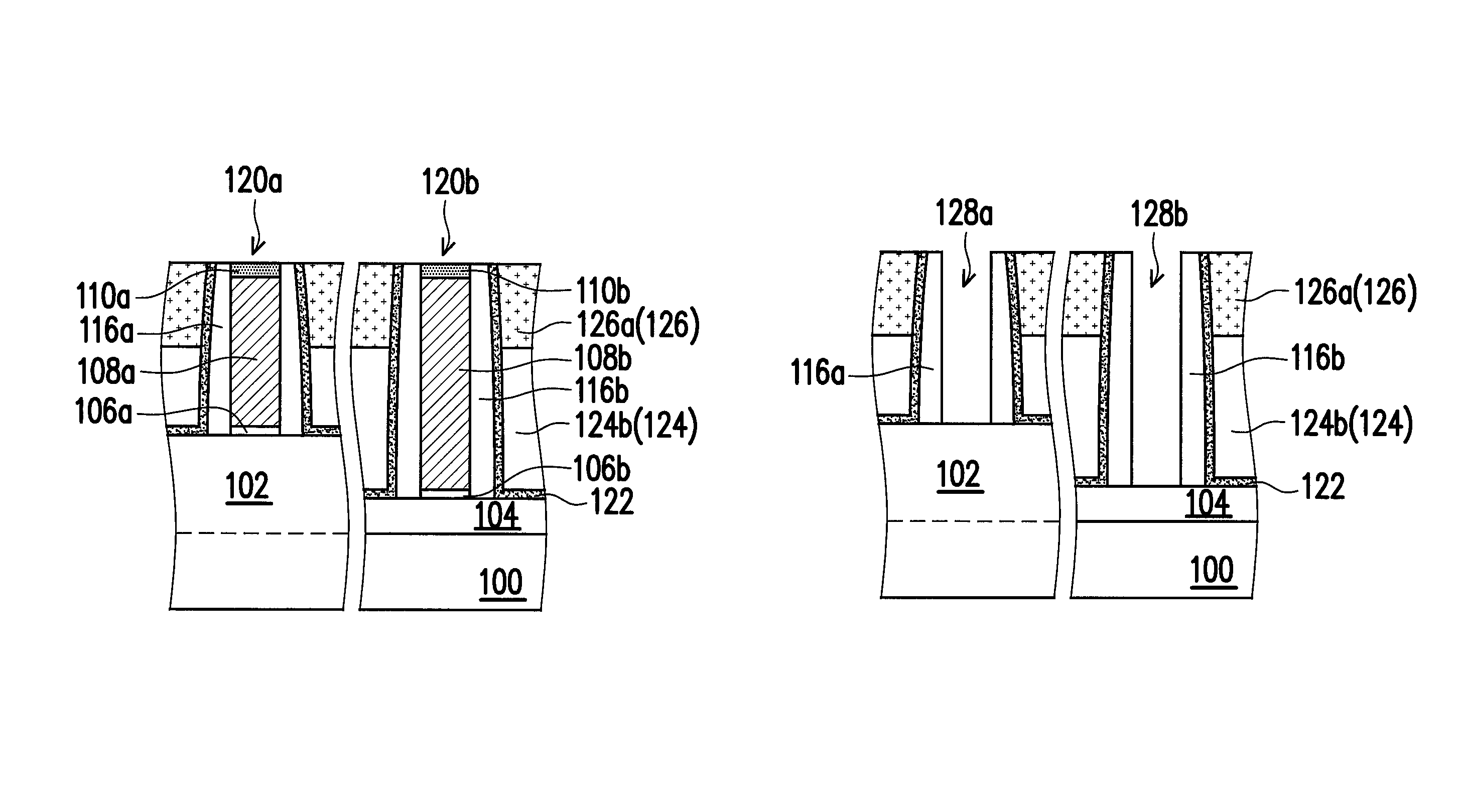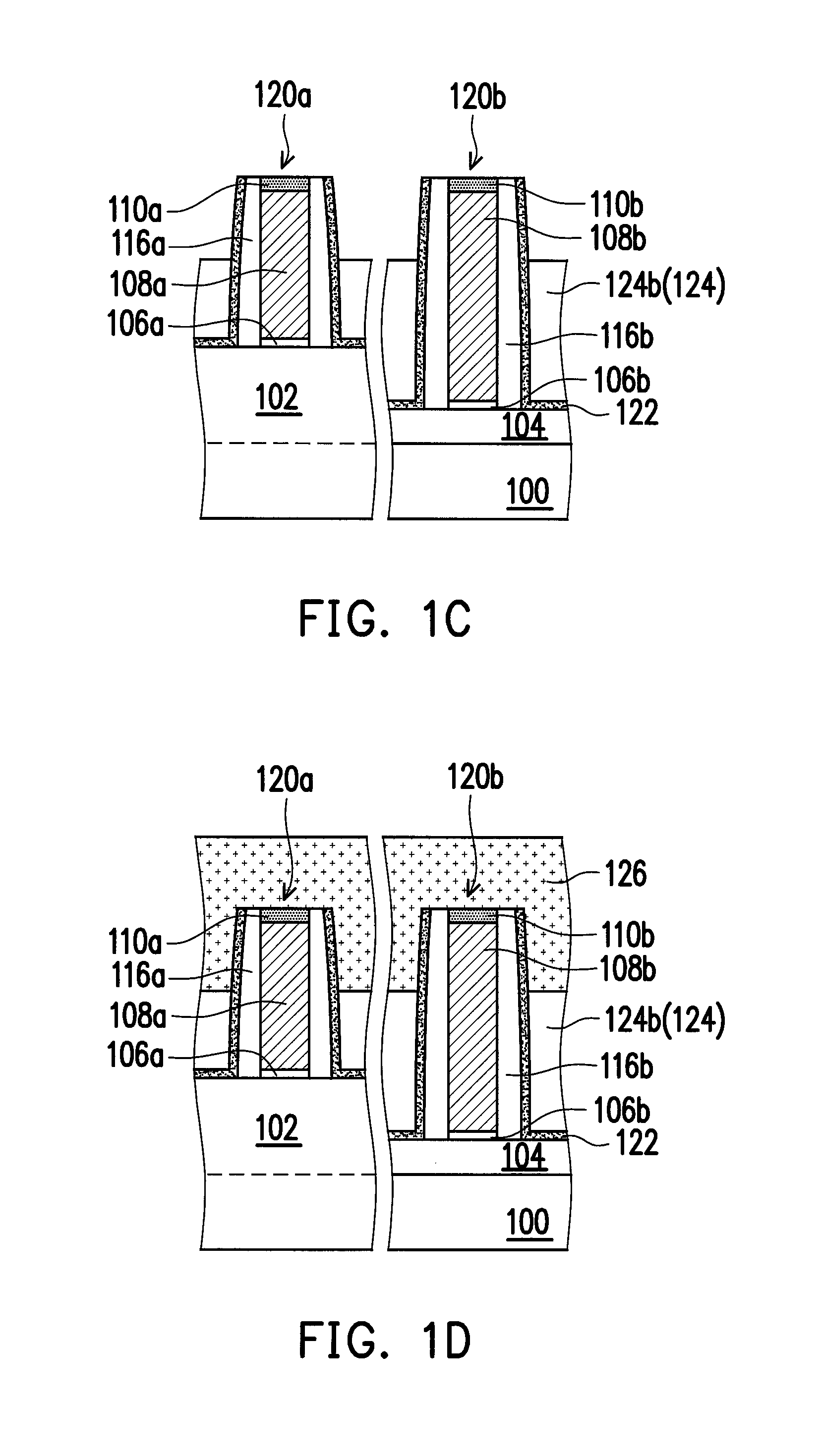Method of forming semiconductor device
a semiconductor and device technology, applied in the field of semiconductor device manufacturing, can solve the problems of generating undesired masking defects caused by polymer residues, oxide loss, and metal residues in dishing, and achieve the effect of improving device performan
- Summary
- Abstract
- Description
- Claims
- Application Information
AI Technical Summary
Benefits of technology
Problems solved by technology
Method used
Image
Examples
Embodiment Construction
[0029]Reference will now be made in detail to the present preferred embodiments of the invention, examples of which are illustrated in the accompanying drawings. Wherever possible, the same reference numbers are used in the drawings and the description to refer to the same or like parts.
[0030]FIG. 1A to FIG. 1F are schematic cross-sectional views illustrating a method of forming a semiconductor device according to an embodiment of the present invention. In this embodiment, the method of the invention is integrated with a metal gate process for illustration.
[0031]Referring to FIG. 1A, a semiconductor substrate 100 is provided. The semiconductor substrate 100 can be a silicon-containing substrate with multiple fins 102 extending in a first direction. Thereafter, an insulating layer (or called a shallow trench isolation structure) 104 is formed to fill the lower portion of a gap between two adjacent fins 102. The insulating layers 104 include silicon oxide. The method of forming the in...
PUM
 Login to View More
Login to View More Abstract
Description
Claims
Application Information
 Login to View More
Login to View More - R&D
- Intellectual Property
- Life Sciences
- Materials
- Tech Scout
- Unparalleled Data Quality
- Higher Quality Content
- 60% Fewer Hallucinations
Browse by: Latest US Patents, China's latest patents, Technical Efficacy Thesaurus, Application Domain, Technology Topic, Popular Technical Reports.
© 2025 PatSnap. All rights reserved.Legal|Privacy policy|Modern Slavery Act Transparency Statement|Sitemap|About US| Contact US: help@patsnap.com



